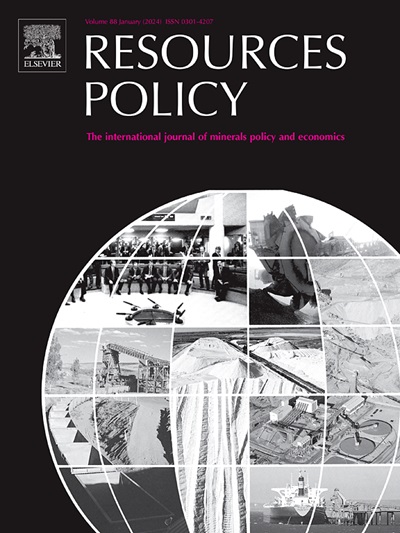澳大利亚采矿业的ESG制图——为决策调动空间数据集的现状
IF 10.2
2区 经济学
0 ENVIRONMENTAL STUDIES
引用次数: 0
摘要
全球能源转型将推动对各种矿产的需求增加。澳大利亚拥有成熟的采矿业和丰富多样的矿产资源,完全有能力支持全球能源转型。矿业的潜在增长代表着一个经济机遇,然而,应对相关的环境、社会和治理(ESG)风险仍然是一个挑战。提高澳大利亚采矿业ESG资质的一个步骤是,矿山开发商、监管机构、社区、投资者和其他行业利益相关者能够将各种类型的ESG数据整合到决策过程中。本文为应用ESG制图奠定了基础,ESG制图是一种研究技术,它利用空间数据来分析和比较澳大利亚规模的采矿和勘探相关因素的采掘地点。为此,本文首先对全国范围内可用的33个空间ESG数据集进行了批判性审查,涉及六大主题:人、土地利用、水资源、极端事件、自然保护和治理。然后,本文提供了两个ESG制图在澳大利亚矿业背景下的概念验证应用,并借鉴这些初步应用,提出了一个旨在充分利用这一技术为决策者提供信息的研究计划。本文章由计算机程序翻译,如有差异,请以英文原文为准。
ESG mapping of the Australian mining sector – The state of play on mobilising spatial datasets for decision making
The global energy transition will drive increased demand for a broad range of mined minerals. Australia is well positioned to support the global energy transition, given its mature mining sector and rich and diverse mineral resources. The potential growth in the mining sector represents an economic opportunity, however, navigating the associated environmental, social, and governance (ESG) risks remains a challenge. A step towards improved ESG credentials across the Australian mining sector is for mine developers, regulators, communities, investors and other industry stakeholders to be capable of integrating diverse types of ESG data into decision-making processes. This paper establishes the foundations for applying ESG mapping, a research technique that mobilises spatial data to analyse and compare extractive locations in terms of factors relevant to mining and exploration, at the scale of Australia. To do so, the paper first critically reviews 33 spatial ESG datasets available at national scale across six main themes: people, land uses, water resources, extreme events, nature conservation, and governance. The paper then provides two proof-of-concept applications of ESG mapping to the Australian mining context and draws on these preliminary applications to propose a program of research aiming to fully utilise this technique to inform decision makers.
求助全文
通过发布文献求助,成功后即可免费获取论文全文。
去求助
来源期刊

Resources Policy
ENVIRONMENTAL STUDIES-
CiteScore
13.40
自引率
23.50%
发文量
602
审稿时长
69 days
期刊介绍:
Resources Policy is an international journal focused on the economics and policy aspects of mineral and fossil fuel extraction, production, and utilization. It targets individuals in academia, government, and industry. The journal seeks original research submissions analyzing public policy, economics, social science, geography, and finance in the fields of mining, non-fuel minerals, energy minerals, fossil fuels, and metals. Mineral economics topics covered include mineral market analysis, price analysis, project evaluation, mining and sustainable development, mineral resource rents, resource curse, mineral wealth and corruption, mineral taxation and regulation, strategic minerals and their supply, and the impact of mineral development on local communities and indigenous populations. The journal specifically excludes papers with agriculture, forestry, or fisheries as their primary focus.
 求助内容:
求助内容: 应助结果提醒方式:
应助结果提醒方式:


